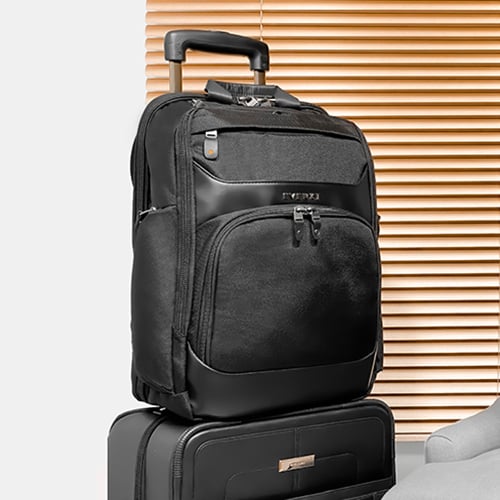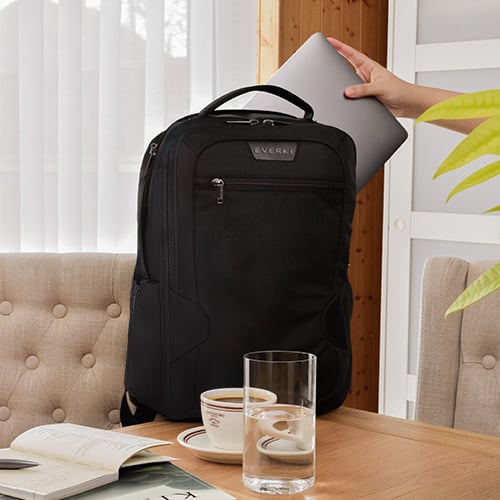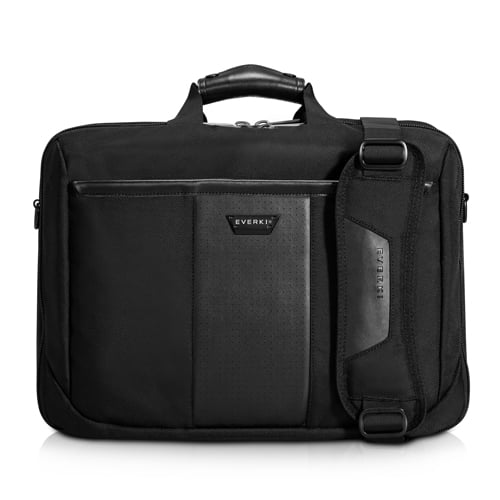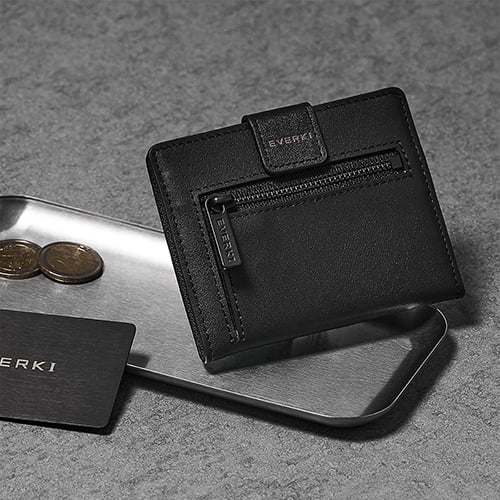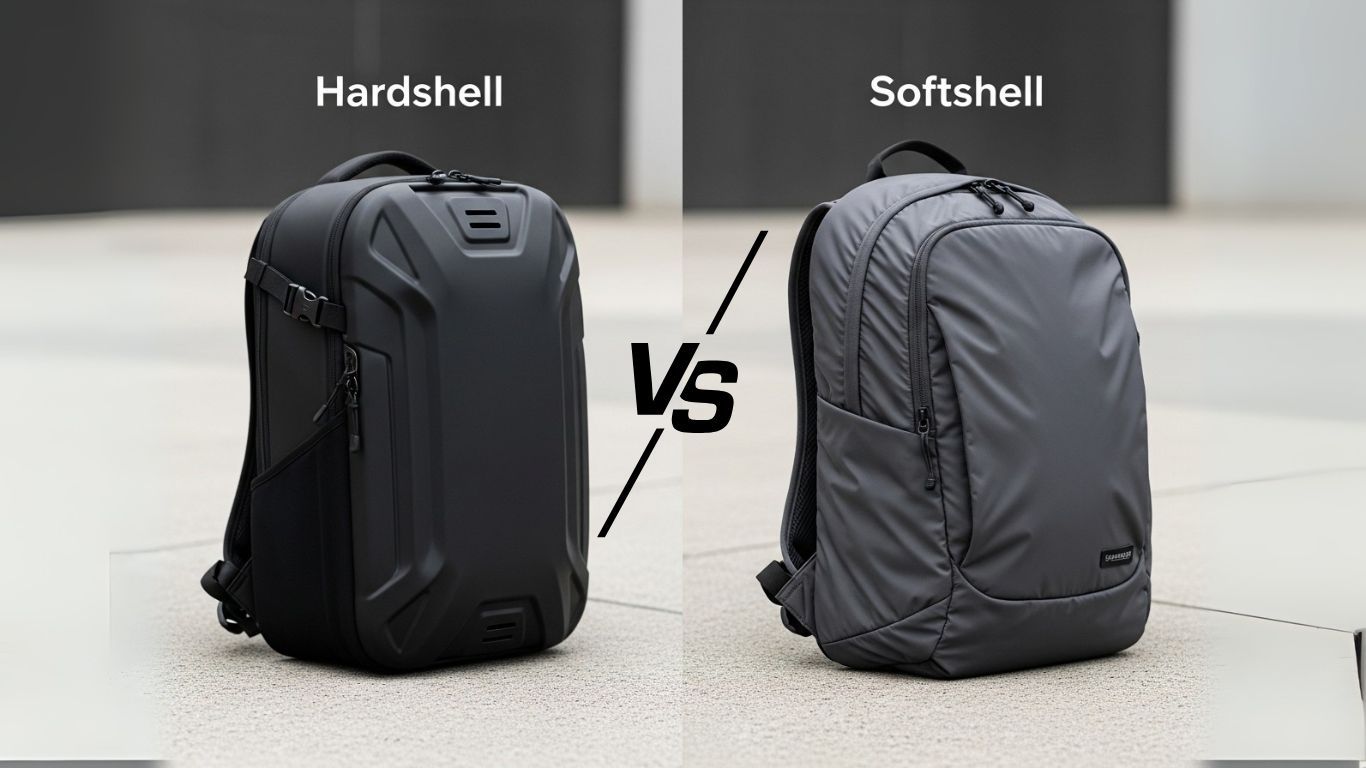Hardshell vs. Softshell Backpack: Which Protects Tech Best?
Quick Summary
- Choosing between a hardshell vs softshell backpack comes down to your needs.
- Hardshell backpacks offer tough, rigid protection—perfect for keeping expensive electronics safe during travel.
- Softshell backpacks, meanwhile, are lighter, more flexible, and great for daily use or outdoor activities.
Introduction
We have all felt that moment- the one when your backpack slips off the table or when you accidentally drop it on the floor. And all you can think about is what’s inside: your $2,000 laptop, your camera gear, maybe a tablet. Did something crack?
That moment is exactly why choosing the right backpack matters most. When it comes down to carrying expensive or fragile tech, the material of your backpack plays a huge role in how safe your gear actually is, especially when it comes to sustainable laptop backpacks that offer both protection and eco-conscious design.
This article is your no-fluff guide to the hardshell vs softshell backpack debate. We’re diving into the age-old backpack debate: hardshell vs. softshell. Which one truly offers better protection? Is a rigid shell really safer, or does the flexible softshell stand a better chance at absorbing shock?
Before you decide, see how EVERKI's hybrid designs offer hard-shell protection with soft-shell flexibility.”
Let’s break down how each performs when it really counts.
What is a Hardshell Backpack? The Fortress For Your Gear
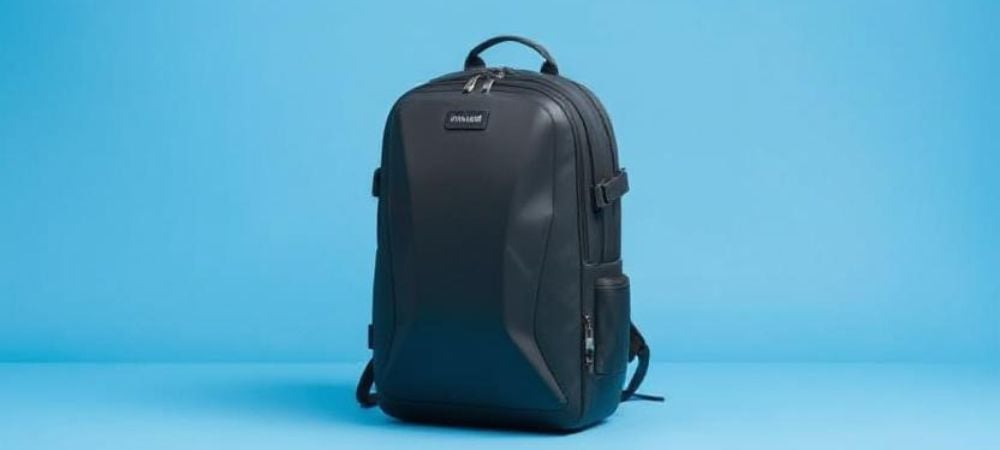

A hardshell is designed with a tough outer shell which is usually made from polycarbonate or ABS material. A hard shell back in contrast to a soft shell, holds its shape and doesn't bend. We can call it a mini suitcase for your back, offering solid protection at all times.
If you are the one who is worried about getting your stuff broken while carrying around, a hard shell backpack is the choice to be made. These backpacks are especially popular with people who carry valuable gear, like laptops, tablets, or camera equipment.
Are hardshell backpacks durable? Absolutely yes.
Pros of Hardshell Backpacks
- Unmatched Impact protection
The hard outer shell helps absorb shocks and bumps, making it ideal as the best backpack for laptop protection. - Superior Water Resistance
It naturally keeps water out better than most softshell bags. It is because the outside isn't made-up of fabric. - Easy to Clean
Its surface doesn't stain like fabric. So, you can easily wipe off the dirt, spills or even scuffs. Cleaning it is so much easier. - Sleek & Modern Aesthetics
Many hardshell backpacks have a clean, minimal design that looks sharp and professional. The minimalist look appeals to the professionals and urban commuters.
Cons of Hardshell Backpacks
Prone to Scratches/Scuffs
Hardshell backpacks protect well.Still, the glossy or matte shells can show wear and tear quickly, especially if you’re rough on your gear.
Limited Flexibility
Being hard in nature, you can’t fit in extra stuff or squeeze stuff into a tight space. The hardshell backpack keeps its shape no matter what.
Need rigid protection without the scratches? Discover the EVERKI Concept 2, featuring a dedicated hard-shell pocket for your sunglasses and gadgets
Heavier
Hardshell backpacks, as the name suggests, are made up of tough material that adds weight. This ultimately makes it feel bulkier to carry around all day.
Often less External Organization
Most hardshell designs don’t have as many easy-access compartments on the outside. Everything’s usually tucked inside.
What is a Softshell Backpack? The Versatile All-Rounder
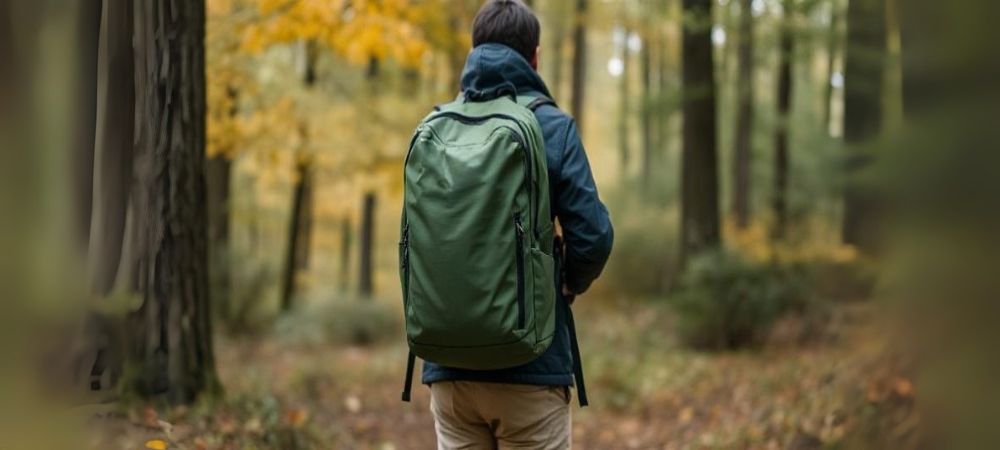

A softshell backpack is what most people picture in their minds when thinking of a typical backpack. It’s made from woven fabrics like Cordura, polyester, or ballistic nylon—materials that are flexible, lightweight, and easy to carry around. Unlike the rigid build of a hardshell, a softshell backpack can move with you, making it a favorite for everyday use, travel, school, and hiking.Softshell designs are even being integrated into wheeled laptop backpacks, offering mobility without sacrificing comfort or versatility.
One of the biggest reasons people choose a softshell backpack is because of how adaptable it is according to your needs. You can pack it in whatever way you want. Light or stuff it full, and it’ll usually adjust to fit your needs. Unlike a hardshell, which keeps its shape no matter what, a softshell gives you room to be a bit more flexible. Also, they are super comfortable to carry, even for long hours.
Pros of Softshell Backpacks
- Highly flexible and expandable
Softshell backpacks can stretch a bit to fit more items. That’s handy especially when you’re packing in a hurry or trying to fit in one last thing. - Lightweight
As softshell backpacks are made from fabric material, they are lightweight. This makes them an excellent choice especially when you need to carry around stuff for longer periods. - Abundant Organization
In softshell backpacks, you can usually find lots of compartments, zippers, and external pockets. This is perfect for keeping things organized and easy to reach. - More Comfortable to Carry
Softshell backpacks have padded shoulder straps and a softer structure. This makes softshells sit more comfortably on your back and shoulders, especially when the bag is full.
Cons of Softshell Backpacks
- Less Impact Protection
Softshell backpacks have less protection around them. If your bag falls or gets knocked around, there’s less padding or structure to shield the items inside. At EVERKI, experience the ultimate in soft-shell organization, backed by our Limited Lifetime Warranty. Explore the Atlas Series for serious travelers. - Can Absorb Water(Unless treated)
Unless the backpack is treated with a water-resistant coating, fabric materials can absorb rain and moisture, which might leave your stuff wet if you're caught in bad weather or accidentally drop your backpack in some puddle. - Harder to Clean
Being made-up of fabric, dirt, spills, and stains tend to sink into the material. You can’t just wipe it off like a hard surface. Depending upon the condition, you might need to scrub or even wash it. - Can be Cut or Torn
Fabric can rip or tear if it catches on something sharp, and it’s also more likely to wear down over time, especially if you’re rough with it or use it in rugged conditions.
At-a-glance: Hardshell vs. Softshell Comparison
| Feature | Hardshell Backpack | Softshell Backpack | Winner For.. |
| Impact protection | Excellent | Good | Electronics |
| Water Resistance | High- Shell is waterproof | Varies- DWR coating helps | Rainy Climates |
| Scratch/Abrasion Resistance | Low- Show Scuffs easily | High- Hides wear and tear | Rough Use |
| Durability (Shell vs Fabric) | Shell can crack on extreme impact | Fabric can tear but won't crack | Longevity |
| Weight & Portability | Often heavier | Generally lighter | Daily Carry |
| Flexibility and Storage | Rigid, cannot overstuff | Excellent, can fit odd shapes | Varied loads |
| Cost | Typically higher | Wide range, Generally More Affordable Options | Budget |
Which Backpack is Better For...? (Scenario-Based Recommendations)
There’s no one-size-fits-all answer when it comes to backpacks. The best one out of all depends on how you plan to use it. Let’s look at a few common situations to help you decide which type—hardshell or softshell—fits your lifestyle best.
-
For the Frequent Air Traveler & Digital Nomad
Go with: Hardshell
If you’re flying a lot or working remotely from different places, a hardshell backpack makes life easier. It keeps your gear safe when it’s stuffed into overhead bins or pushed under airplane seats.
Many hardshells are also designed to open flat for airport security. This makes getting through airport security checks much faster and less stressful. And with all the expensive tech digital nomads usually carry, that added layer of protection just gives you peace of mind.
With EVERKI, make security a breeze. Shop our full line of Checkpoint-Friendly Laptop Backpacks
-
For the Daily Commuter & Student
Go with: Softshell
If you are the one who rides public transport daily or you are heading to work or school? A softshell backpack is usually the better choice.
It’s lighter, more comfortable to carry, and flexible enough to hold books, lunch, or even a jacket . Plus, the extra pockets on the outside make it easy to grab things like water bottles or your phone. Just look for one with a padded laptop sleeve and you’re good to go.
With EVERKI, Protect your tech on the go. Find the perfect backpack for your laptop size (13" to 18.4")."
-
For the Outdoor Adventurer & Hiker
Go with: Technical Softshell
If you’re into hiking, camping, or outdoor exploring, a softshell backpack is the choice to be made. These are made to move with your body, so they’re way more comfortable for long walks.
They’re also lighter and often come with helpful features like hydration pack compatibility, chest straps, and ventilation. Some are waterproof as well and come with a rain cover to protect your stuff in rainy weather.
-
For the Photographer & Videographer
Go with: Hardshell (or a softshell with built-in protection)
When you’re carrying cameras, lenses, and other gear that are expensive, protection matters more than anything else. A hardshell backpack does a great job at keeping your equipment safe from bumps and drops.
If you prefer something softer, some softshell bags are made just for photographers and come with padded dividers and reinforced interiors. But overall, if you're carrying fragile gear, a hardshell (or a heavily padded softshell) is the safer choice.
The Buyer's Guide: 3 Things to Check Before You Buy
There are a few important things to look at before you make a choice between a hardshell or a softshell backpack. Beyond just the outer material, small design details can make a big difference—especially when it comes to protecting your gear.
1. Material Deep Dive
If you're choosing a hardshell, you’ll likely come across two main materials:
- Polycarbonate, which is a more durable and flexible option. It can withstand forces without cracking.
- ABS plastic, which is more budget-friendly but not quite as tough. It’s lighter but also more likely to crack under stress or over time.
For softshell backpacks, here are two common heavy-duty fabrics:
- Cordura, which is known for being rugged and abrasion-resistant. It is an excellent choice especially if you’re rough on your gear or using the bag outdoors.
- Ballistic Nylon is super strong and tear-resistant. It was originally designed for military use, so it’s built to last.
In short, better materials usually mean better protection and a longer life for your backpack.
2. The Laptop Compartment
Not all laptop sleeves are created equal. Some backpacks have a simple padded pocket, which is fine for everyday use. But if you want real protection, look for a “suspended” laptop compartment. This means the bottom of the sleeve doesn’t sit directly on the base of the backpack. So, if you drop your bag, your laptop won’t hit hard into the ground. Combine that with extra padding and you’ve got a much safer setup for your tech.
3. Zippers and Seams
Even with the most water-resistant backpack shell, if the zippers leaks, water will still get in. That’s why it’s worth looking for water-resistant zippers, like
- YKK
- AquaGuard or some other sealed options.
They help to keep the moisture out. Also, check the seams. Reinforced stitching and sealed seams add durability and help prevent weak points that might rip over time.
Conclusion
At the end of the day, making a choice depends on what thing you want as a priority i.e: protection or versatility.
Hardshell backpacks are ideal if your top priority is keeping your gear as safe as possible. Their rigid structure, impact resistance, and water-repelling design make them a perfect choice for those who carry around expensive gadgets or delicate equipment.
Softshell backpacks, on the other hand, are all about flexibility. They’re lighter, easier to carry, and more adaptable to everyday needs like commuting, school, or outdoor adventures.
If your main concern is protecting high-value electronics while you’re on the move, a high-quality polycarbonate hardshell backpack is the clear winner. But for most people—especially those looking for all-day comfort, extra pockets, and lightweight design—a modern, well-built softshell backpack offers the best of both worlds.
FAQs
Q: Are hardshell backpacks completely waterproof?
A: While the shell material itself is waterproof, water can still penetrate through the zippers. Look for hardshell backpacks with weather-sealed or PU-coated zippers for maximum water resistance.
Q: Can a softshell backpack protect a laptop?
A: Yes, a high-quality softshell backpack with a dedicated, padded, and suspended laptop compartment can provide excellent protection for a laptop against everyday bumps and drops.

